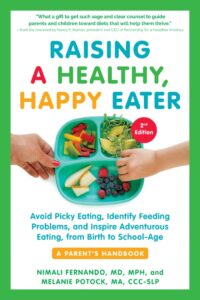From an expert feeding therapist, here’s the authoritative guide on everything you need to know about responsive feeding.
Parents are tired of struggling with their child at mealtimes. It’s a familiar scene: Parent offers a spoon, loaded with nutritious food; Baby turns their head away and starts crying. Enter responsive feeding. Recommended by the US Department of Health and Human Services, the Academy of American Pediatrics, and UNICEF, responsive feeding is learning how to read your baby’s communication cues and your toddler’s often-very-strong preferences (hello two-year-olds!) rather than feeding them a predetermined amount.
Think of responsive feeding as a dance. For parents, it’s about engaging your baby, anticipating their moves, and taking turns to lead the choreography. The parent responds to baby’s communication and baby responds to parent. Because the parent is in-tune and present in the moment, they will connect and flow, making for a joyful experience!
Using evidence-based strategies, feeding therapist and speech-language pathologist Melanie Potock explains how to read your child’s cues to ensure happy mealtimes with happy kids. This book is designed to answer the most common questions about feeding babies and toddlers up to age three. It also debunks myths while offering practical tips on making mealtimes joyful and less stressful. It teaches a no-nonsense, straightforward approach to responsive feeding that’s focused on nurturing trust and communication between parent and child.









